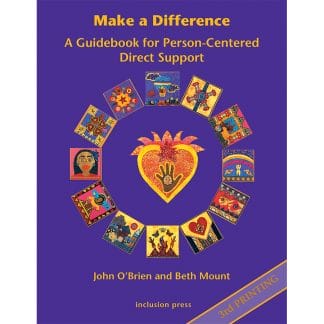“…to interact with non-disabled persons to the fullest extent possible.”
Perspectives On “Most Integrated” Services for People with Developmental Disabilities
John O’Brien
2006
These notes are not intended and should not be used as a source of advice on how to meet legal or administrative requirements. They are simply a resource for discussing the sorts of assistance that offer people with developmental disabilities the best chances for social integration. Such discussions are a necessary part of planning and providing services among those who take seriously the criterion of “most integrated”.
Thanks to Marcie Brost for framing the question that led to this publication and to Connie Lyle O’Brien, Anne Escrader, Jim Gardner, Mike Green, Ray Lemay, Jack Pealer, David Race, and Alan Tyne for re- viewing and commenting on an earlier version. Ray Lemay kindly shared his writing on SRV and social integration. Participants in a retreat for people involved in Maine’s community building initiative informed the SRV section.
US law offers people with developmental disabilities a safeguard in
the form of a requirement that services offer the “most integrated” way to meet each person’s needs. These notes offer a way to think about what “most integrated” can mean. They are based on the experience of people with developmental disabilities who, with the support of commit- ted allies, live as contributing members of their communities, and there- by experience regular and positive interactions with their non-disabled fellow citizens.



